Bull sale success
HAZELDEAN’S spring bull sale has been declared a success by buyers and agents following the Angus stud achieving a full clearance and selling to atop of $30,000.


On September 7, buyers from across the country attended the Litch eld family’s Hazledean property where 124 bulls were presented.
Despite the prevailing market conditions, all 124 bulls were sold at an average of $13,161. Nutrien Ag stud stock agent Tim
Woodham said the sale was a terri c result for Hazeldean, and demonstrated the quality of the bulls o ered.
“This was an exceptionally good sale. I think it went better than expected,” Mr Woodham said.



















“Considering the current conditions, to achieve full clearance is a great result.



“The sale shows the consistency of the bulls Hazeldean produces and the support they have from buyers.
Two bulls sold for $30,000 with lot 18 purchased by the Cleveland Pastoral Company of Tasmania and Lot 19 bought by the Masteron Pastoral Company of Goulburn
Kim Dyson, buyer of lot 19, said he was again pleased to secure the top priced Hazeldean bull.
“Hazeldean produces quality bulls. They’re good stylish bulls with good fertility,” Mr Dyson said.
“I’m particularly impressed with their ease of calving. We





calved 161 heifers and each one was unassisted.”
Ed Bradley, marketing and sales manager at Hazeldean, said the stud is appreciative of the support from regular buyers and the interest shown from new buyers.

“The sale was really strong. We are attered by the support,” Mr Bradley said.




“The support from our longterm clients shows they consider our bulls to be of the highest quality and that we o er a quality product.”

www.monaropost.com.au Part of the F armer Group of Rural Newspapers – Incorporating Your SNOWY MONARO our F arm art Y MFS producer’s breakfast Rural financial advice Bull sale wrap PAGE 3 PAGE 6 PAGE 2 & 7
Royal Hill, Cooma NSW 2630 For a quote, contact 6452 1934 info@coomasteel.com.au www.coomasteel.com.au Follow us on Facebook The Trailer you ALWAYS wanted, now at Cooma Steel Metaland 10,814 inc gst $7,689 inc gst Type: Heavy Duty 3.5t Dual axle Tipper Finish: 2 pack painted Size: 12x6 Brakes/no brakes: Electric brakes Fixed /tipping: Tipping Type: Heavy Duty 2.8t Dual axle Plant trailer Finish: 2 pack painted Size: 10x6 Brakes/no brakes: Electric brakes Fixed /tipping: Fixed Type: Heavy Duty 3.5t Dual axle Flat Top trailer Finish: 2 pack painted Size: 14x7 Brakes/no brakes: Electric brakes Fixed /tipping: Fixed
Country concerns ignored
NSW Farmers has accused the state government of ignoring the concerns of regional communities, with the Premier reportedly vowing to build enormous overhead powerlines across the state.
Recent media reports revealed the Premier told a Business Sydney event that overhead powerlines were the only option, pre-empting the outcome of a Labor-led inquiry into the undergrounding of transmission lines. The inquiry was launched following serious concerns from farmers and country communities, who complained they were being made to pay the cost of keeping the lights on in Sydney.
NSW Farmers President Xavier Martin said the comments were deeply disappointing, and the government would need to work hard to minimise the impact on rural and regional taxpayers.
“The Premier has set himself on a collision course with the regional taxpayers over this issue,” Mr Martin said.
“These overhead powerlines will involve towers taller than the pylons on the Sydney Harbour Bridge running through paddocks and across the countryside, and it will reduce our ability to grow food and bre at a time when productivity is paramount.
“This ‘energy transition’ has been an incredibly mismanaged process to date and now we will see people in the country foot the bill for Sydney-centric government stu -ups.”
Throughout the transition away from coal- red power country communities had urged governments to work collaboratively with them. But instead, Mr Martin said, there had been many reports of bully-boy tactics from developers and government representatives who simply wanted to bulldoze their way through without any regard for the impact on locals.
Kunuma sells to $11,000
By LUKE TREADWELL
KUNUMA Angus Stud showcased their quality high-country bulls at their 40th on-property spring bull sale.

Forty- ve bulls went under the hammer with the top priced sold for $11,000.
Dean Lynch of Kunama welcomed a crowd of potential buy-
ers to Kunuma Angus Stud for the 40th annual on property spring sale of 45 bulls.
“I wish you all the best with your purchases today, and hopefully these bulls will go well in whom hands they fall to,” Mr Lynch said.
Out of 45 advertised bulls six bulls were withdrawals and were not o ered for sale. 10 were
passed in without bid, and 29 were sold under the hammer.
The highest priced bull was lot 7, a Kunuma S129. Described as a super quiet Rennylea 542 son out of a 24J cow that sold for $11,000.
The average sale price was $7,827 across the 29 bulls that were sold. Matt Lee from Bairnsdale Victoria purchased
buyer’s agent Bailey Anderson from Nutrient Ag Greenwood. Damien Roach from the Nutrient Ag sales team said he believes lot 7 sold for the most as it was bred true to what Kumuma Angus Stud is trying to achieve.
“It has a solid data set and is a stretchy type of bull,” Mr


We cater to all types of animal industries including:

• Small animal breeders, such as rabbits and cavies
• Stable bedding for the family pony or champion thoroughbred
• Dairy calves
• All forms of barn-raised poultry
Our product is of the highest quality and meets all HACCP standards for use in the poultry and animal industry. Our product is clean and free of contaminates such as CCA, glues and resins.
For enquiries or quotes contact
Anthony: 0428 484 153 | Tim: 0401 720 418
WORM TESTING: A relatively mild winter has produced favourable conditions for worm survival.


MFS finds worm outlook concerning

MONARO Farming Systems (MFS) runs a very successful Worm Club, collecting worm egg count (WEC) data from sheep and cattle producers on the Monaro.

MFS partners with an external consultant to analyse the data and provide evidence based information speci c to the Monaro to help guide improved performance and productivity.
“Our Spring worm risk outlook for the Monaro shows that a relatively mild winter has resulted in favourable conditions for worm survival,” an MFS spokesperson said.

“The average worm egg count in the Monaro between June 1 this year to August is 334epg, this is nearly double the long term average over winter in the Monaro.
“We have observed an av-
erage of 60% Barbers Pole, 19% Brown Stomach and, 20% Sour Worm. The high percentage of Barbers Pole has been observed throughout NSW and is an early warning sign for the coming spring.”
MFS adds that regular WECs and e ective drenching is key to successful worm control. For more information, contact Bec Kading at admin@ monarofs.com.au.
Wednesday September 13, 2023 Snowy Monaro Farmer - Page 2
NRI 1164 -8-0.7% 16.5 1943 -9-0.5% 17 1718 -44-2.5% 18 1525 -8-0.5% 19 1404 -1-0.1% 20 130530.2% 21 125900.0% 22 120000.0% 23 99200.0% 26 534244.7% 28 34551.5% 30 327103.2% 32 280155.7% MC 710 -12-1.7% Wkly Change 6/09/23 Northern Region Indicator (c/kg) 700 750 800 850 900 950 1000 1050 1100 1150 1200 1250 1300 1350 1400 1450 1500 1550 1600 1650 Oct ‐22 Nov ‐22 Dec ‐22 Jan ‐23 Feb ‐23 Mar ‐23 Apr ‐23 May ‐23 Jun ‐23 Jul ‐23 Aug ‐23 Sep ‐23 NRI AU NRI US Source:AWEX 0268 514000 0267 607577 0264 523130 Forbes: Tamworth: Cooma:
Lamb, beef surging in popularity as prices decrease
SHOPPERS are increasingly putting red meat in their trolley as retail prices push back against the inflation trend being seen more generally at the supermarket checkout.
This is according to Meat & Livestock Australia (MLA), which provides free and transparent market information and analysis service to the red meat industry. As part of this commitment, MLA has analysed the relationship between prices seen for livestock at the saleyards, and prices of red meat at the shops.
Throughout this year livestock prices for cattle and sheep have declined significantly following historic highs in 2022.
While livestock prices have decreased this year, MLA notes that the reduction in average retail price of red meat lags prices paid to producers by approximately eight months. This is due to the amount of supply available, demand for Australian red meat in export markets, and rising input costs through the value chain.
In the previous 12 weeks to August 13, retail prices for beef and lamb have declined significantly, following a trend that’s continued throughout 2023, demonstrating that the fall in livestock prices has started to impact the price paid at the checkout.
RETAIL PRICES AND DEMAND
The performance of Australian lamb and beef in the domestic market remains solid, with both proteins growing in sales volume and overall value. When comparing the last quarter with the same period last year, value growth for beef is 1.8 percent and for lamb is 4.2 percent.
Data from NielsenIQ HomeScan shows a 7.3 percent reduction in the price consumers are paying for lamb compared to a year ago, which is supporting a 12.4 percent increase in volume of lamb purchased at the cash register.
According to Nathan Low, General Manager of Marketing and Insights at MLA, lamb has seen a boom in purchases in recent months, as consumers notice its falling price and jump on the opportunity to purchase a high quality and nutritious protein.
“The price reduction is translating to increased purchasing frequency for several cuts,” Mr Low said.

“This is especially the case for the most popular cuts like lamb legs and chops, which are up 20 percent compared to one year ago.
“Consumers see these price reductions and purchase more as a result. As this happens, retailers are looking to bring
in customers with competitive pricing through catalogue promotions, and increased stock on the shelf,” Mr Low said.


For beef, NielsenIQ is reporting 7.1 percent growth in volume in the last quarter, compared to the same period last year, with an average retail price decrease of 4.9%. Frequency of purchase and volume per purchase are both up in the latest quarter as well.
“Consumer perception of beef and lamb is strong,” Mr Low said.
“Tracking by Kantar, commissioned by MLA on behalf of industry, said that consumers see both beef and lamb as increasingly worth paying more for due to their high quality and taste.”
RELATIONSHIP BETWEEN LIVESTOCK AND RETAIL MEAT PRICES
Historically, data on supply, pricing and consumer demand shows that it takes about eight months for livestock prices to translate to the retail shelf.
The last time in recent history that beef prices dropped considerably was in 2012, with the lag to shelf arriving eight months later, with those lower prices remaining for about nine months.
For lamb, which has seen a drop in prices in the fourth quarter of the calendar year every year since 2018, it experienced significant price drops in 201213 and 2016-2018. Correspondingly at this time, retail pricing took about nine months to fall.
According to Mr Low, there are a variety of factors that drive pricing in the retail market, as well as additional supply chain pressures occurring currently.
“Livestock prices are only one component of retail meat prices,” he said.
“Producing retail meat requires investment in energy costs, transport and freight costs, labour costs, packaging and disposal costs, retailer margins, processor margins, PPE and hygiene, all of which have increased in price over the last year, along with almost everything else.”
“This is important to remember when considering when livestock prices increased as they did to historical highs last year. When saleyard prices were at those highs a year ago, retail prices increased but not at the same rate.”
“What we are seeing now is that same trend, just in the opposite direction. Consumers need a degree of certainty for their shopping basket and retailers smooth the retail pricing impact over the longer term, rather than sharply increase or decrease the price of meat in accordance with livestock prices.”
Electronic ID of sheep and goats digested over brekky
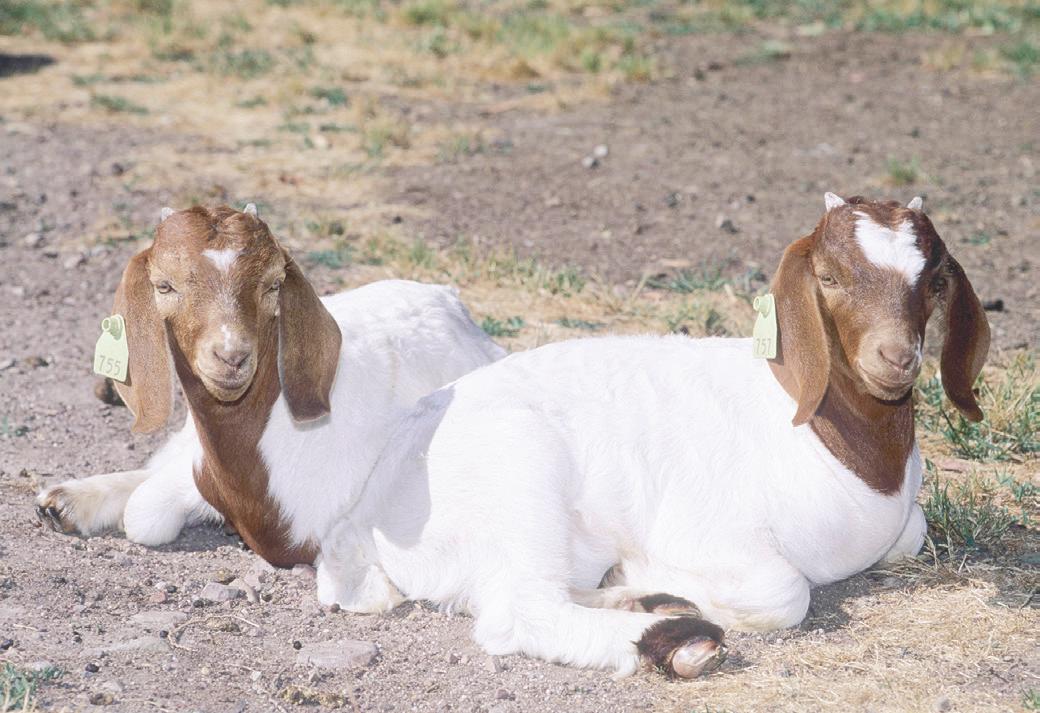 By SAM TONKS
By SAM TONKS
IF getting the latest information on the introduction of electronic identi cation for sheep and goats is of use to you, and you’d like to do it in a friendly local setting with fellow farmers, then there’s an upcoming Producer Breakfast you need to know about.
Monaro Farming Systems (MFS) is extremely grateful for the support of the NSW Department of Primary Industries who have o ered to provide a local region presentation on the introduction of electronic identication for sheep and farmed goats.
NSW DPI’s Sheep & Goat Traceability team member, Jackie Chapman will have eID
technology on display and an overview of the government supports which are available for implementation following the announcement on October 3, 2023.
“The morning will also include the previously postponed 2023 MFS AGM, and guests will be provided with a hot breakfast and great co ee,” an MFS spokesperson said.
“The event will be held in Bombala on Wednesday, October 11 from 8 to 9.30am, and a venue will be con rmed shortly. Save the date in your diaries and further information will be forthcoming.”
RSVPs will be essential for this event, so please contact Frances at the MFS at executive@monarofs.com.au

Snowy Monaro Farmer - Page 3 Wednesday September 13, 2023
COOMA ASSOCIATED AGENTS P/L VENDORS NOTE: ALL NVD’S MUST BE CURRENT (JULY 2020 ONWARDS) AND ALL STOCK EARTAGGED PRIOR TO LEAVING YOUR PROPERTY 6452 4155 6455 5500 6452 7747 6452 6565 ENTRIES ARE INVITED FOR THIS COOMA SALE. CONTACT THE SELLING AGENT COOMA SEPTEMBER SPRING CATTLE SALE 300 300 FRIDAY 22 ND SEPTEMBER 2023 COMMENCING 10AM ENTRIES INCLUDE: Account: V Davis (BC) Account: A Green (BC) Account: Nola Hodge (ELD) • 12 Angus Cows, Mixed Ages • 12 Ph Steers, 1 ½ Yrs, F,S,C • 30 Hereford Steers, 8-12 Mths Depast A/Bull, Calve Nov • 15 Hereford Heifers, 8-12 Mths • 8 Angus Steers, 2 Yrs • 10 Angus Calves, Mixed Sex Account: Kaldeana (BC) • 30 Ph Cows, Mixed Ages, Calves Sept/Oct • 10 Ph Hfrs RAM SALE Open Day 15th October 2023 Sale Friday 20th October 270 rams O ce (02) 6453 5555 Bea Litch eld 0427 933 103 | Ed Bradley 0412 298 546 Jim Litch eld 0417 676 561 | admin@hazeldean.com.au www.hazeldean.com.au
NETWORKING EVENT: Monaro Farming Systems will host a producer’s breakfast to discuss the electronic identification of sheep and goats.
Numbers decile at Wagga Wagga sheep sale
By LEANN DAX, MLA MARKET REPORTER
Total yarding: 51000 (-12000)

Sheep yarding: 12000 (-1000)
Lamb yarding: 39000 (-11000)
Numbers declined on the back of last week’s price severe price correction. Quality remained mixed however, new season trade and heavy categories was outstanding. Agents offered 9100 new season lambs. The market Improved with glimpses of strong bidding for old and young well finished types.
One key supermarket dominated young trade lambs, weighing between 22 to 26kg. Heavy lambs were well supplied and most companies were in the fray.

Trade competition was stronger and prices lifted around quality, with recently shorn old lambs paid premium prices. Young new season trade lambs 21kg to 26kg improved $10 to $12 selling from $116 to $142 to average 545c to 570c/kg cwt. Light weight lambs to the processors ranged from $21 to $86/head. Merino lambs sold from $39 to $115/head
In the heavy export market, weight continued to be the driving force behind any bursts of bidding. The bulk of the heavy export lambs sold up to $14 dearer. Lambs 26kg to 30kg sold at $113 to $142/head. Over the 30kg made from $147 to $176/head to average 448c/kg cwt.
Only a few buyers operated in the sheep market, with major processors only bidding on sheep that weighed more than 28kg carcass weight. Heavy Merino ewes and wethers sold from $40 to $93/head. Merino ewes 26 to 30kg cwt averaged 89.9c/kg. Heavy Crossbred above 30kg carcass weight average 144c/kg. Trade sheep with cover averaged 104c/kg.
Cattle numbers steady at Wagga Wagga
Total Yarding: 422 (+212)
NUMBERS were similar to the previous sale. The market rallied for export stock however, there was very little upside across yearling categories.
Feedlots buyers were few, and competition fell away for coloured cattle. Demand from
exporters for heavy steers and bullocks improved, with southern processors keen to acquire stock. Cow numbers lifted and so did prices.
Feeder steers weighing between 400 to 500kg were unchanged to average 284c/ kg. Feeder heifers medium clawed back last week’s losses
Heavy trade steers sell to 270c/kg
Total Yarding: 422 (+212)
At the Yass cattle sale on September 7, numbers doubled and the quality was fair to good. There were lines of weaners that sold to restocking orders.
A limited supply of light yearlings and medium weight feeders, competition was weak on these cattle. Trade cattle were in reasonable numbers and there were good runs of finished grown steers and heifers and heavy cows.
The market sold to stronger trends on the heavier and finished cattle while the light cattle firm to slightly cheaper.
Medium weight weaner steers reached 301c and heifers sold from 200c to 258c/ kg. Medium and heavy feeder steers lifted 10c selling from 235c to 260c and the heifers were rm 180c to 220c/kg. Heavy trade steers and heifers sold from 240c to 270c/kg.
The grown steers and bullocks to process li ed 25c with a larger supply and ranged from 255c to 266c/kg. Grown heifers li ed 20c and ranged between 226c and 255c/kg. Cows gained around 25c on average and the medium weight 2 score cows averaged 170c and the heavy 3 and 4 score sold from 190c to 236c/kg.
selling from 230c to 290c/kg.
The majority of the medium weight heifers sold from 230c to 290c/kg. Trade steers and heifers slipped 20c to 23c selling from 180c to 308c/kg
In the export sale a few more processors were active. Heavy steers improved 5c to average 267c/kg. Bullock prices kicked
up 8c to average 276c/kg. Cow quality was exceptionally good a reflection of the spring season. There were some outstanding runs of big heavy cows resulting in a price lift of 7c/kg. Heavy cows selling at 230c to 250c/kg. Leaner grades made from 176 to 210c/kg.
Yass lamb numbers ease
Total Yarding: 5425 (-1540)
Sheep Yarding: 1425 (-1025)
Lamb Yarding: 4000 (-515)
Lamb numbers eased and the quality was again mixed. There were several pens of well nished heavy and extra heavy lambs. Trade weights had the biggest variation in condition and quality and there were plenty of secondary lambs that were lacking cover. Not all the usual buyers were operating but there was a local butcher operating and the market li ed on the better shaped lambs with weight., secondary light lambs were cheaper.
There were only a few new season lambs with heavy trades reaching $130 and heavy lambs $145/head averaging between 480c and 520c/kg.
Old two score processing lambs to 18kg cwt sold from $21 to $77/head. Trade weights lied $10 to $15/head on the better lambs and the 20 to 22kg cwt sold from $66 to $96 and the 22 to 24kg $80 to $106/head. Heavy old lambs 24 to 26kg ranged from $126 to $136 and the 26 to 30kg reached $149/head.
The better lambs with shape and yield averaged 470c to 490c/kg cwt. The best of the Hoggets reached $58/head and were slightly easier on less weight.
Mutton numbers were back and the quality fair. Prices back around $10/head. Light ewes sold upto $15/head. Medium weights $14 to $35 and heavy crossbred ewes topped at $35. Merino wethers reached $40/ head. Most 100c to 150c/kg cwt.
Sow What - rooting depth of pastures
By STUART BURGE, AGRONOMIST
IN my last column, I discussed the signi cant role that annual grasses play in our pasture production systems.
I outlined the physiology of annual grasses which enables them to commence spring growth earlier than other species which is especially important at the end of what has been a di cult winter.
If there is however a signi cant downside to annual species it is their rooting depth.
For obvious reasons annual species must complete their lifecycle from germination to owering and until they set seed in a relatively short period of time.
Consequently, this does not allow for deep roots to be formed and indeed most are con ned to the top 10 centimeters.
This applies to not only annual grasses but annual legumes such as subterranean clover.
This fact partially explains why we soil test for soil fertility to a depth of 10 cms because this is where there is the greatest concentration of very ne seminal root hairs and hence the major zone of nutrient uptake.
The other category of grasses in our pasture production systems which I also referred to previously and which provide long term stability and drought tolerance are the perennials.
Perennials by de nition are very long lived and can survive for many decades if grazing management and fertility levels are adequate.
There are of course major di erences between annual and perennial grass species including seasonality of production and length of growing season.
But in essence the most signi cant di erence comes down to rooting depth which directly in uences both these characteristics
Perennial species have much deeper primary root systems or primary tap roots than annuals.
However there are also di erences between perennial species.
The e ective rooting depth of any cultivar will understandably vary significantly according to the soil characteristics of the particular site.
These include such physical attributes as soil depth, soil texture and soil structure but also soil chemistry and soil fertility.
However as a relative guide, research at two sites in Victoria indicated the following average rooting depths for species commonly sown on the Monaro: Phalaris 1.2 meters; cocksfoot 0.87 m; fescue 1.1 m; perennial ryegrass 0.7 m.
These gures for fescue and especially ryegrass are greater than what would normally be expected but this was a very favourable high rainfall environment.
For example, when undertaking irrigation scheduling I would normally work on an e ective rooting depth of 300 mm for ryegrass and 600 mm for fescue.
The point though is that it demonstrates the variability between species.
lights the deep rootedness of
The other signi cant takehome message is that it highlights the deep rootedness of Phalaris and hence its vital role in terms of drought tolerance.
Lucerne too is renowned for its ability to have a very deep tap root which can extend to 3 meters into the soil pro le.

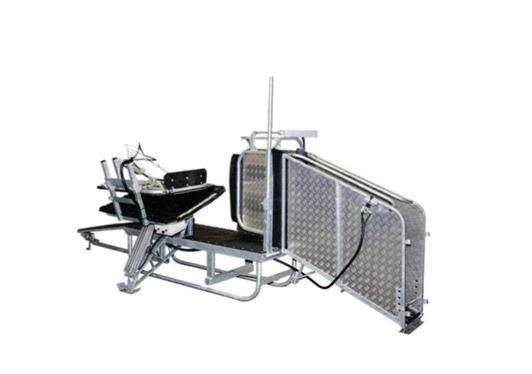
This explains why in dry years and drought the lucerne paddocks retain their green leafy appearance.
Just have a look as you drive around the Monaro at present.
Wednesday September 13, 2023 Snowy Monaro Farmer - Page 4 IN STORE NOW
Local efforts to fight Varroa Mite
By LUKE TREADWELL
Varroa Mite continues to spread across NSW with the Department of Primary Industry (DPI) con rming three new infestations.

Michelago resident and operator of the Bee Healthy Project, Greg McFaul, says more needs to be done to prevent the further spread of Varroa Mite.
Mr McFaul initiated the Bee Healthy Project in 2022, a collaboration with industry experts to bring cutting edge micro-technology and machine learning to the monitoring of the health of European bee hives and the detection of Varroa destructor (Varroa mite)
“The current line from DPI is that containment and eradication is working but my opinion is that it could continue to spread,” Mr McFaul said.
“There are now new sites to contain. Half the beekeepers are very upset over the loss of bees and there is a class action to sue the government.

“The current state of play is very divided. Some people would argue containment and eradication is worthwhile, others would say we have killed a lot of bees.
“This is the beginning of varroa mite in Australia. If

its transportation that is spreading Varroa faster than it otherwise would naturally.”
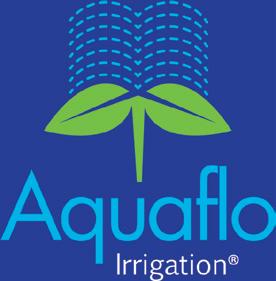




The method of containment and eradication has created division around the country with apiarists that have had their hives destroyed saying the com-


nies; you still must potentially eradicate a hive, but hope has been found in e orts to breed queens that train the rest of the hive to identify and tackle varroa mite themselves.

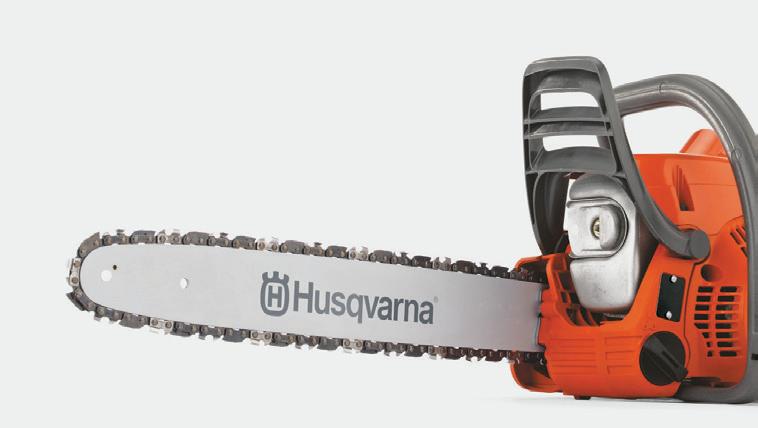
“The Americans are trying to raise queens to acknowl-
enough Varroa in Australia to collect the required data.”
VARROA MITE: Locals are calling for greater action to be taken to prevent the further spread of Varroa Mite.
Snowy Monaro Farmer - Page 5 Wednesday September 13, 2023 husqvarna.com 5 YEAR DOMESTIC WARRANTY# #Terms and Conditions apply, see HUSQVARNA.COM for details. Offers valid 01/09/23 - 31/01/24 while stocks last, at participating Husqvarna Dealers. 130 38.0cc - 16" Bar - 3/8" LP - 4.7kg 38.2cc - 14" Bar - 3/8" LP - 4.85kg $499 RRP $399 " Make your everyday better Your local authorised Husqvarna Dealer: $299 husqvarna.com # 5 YEAR DOMESTIC WARRANTY #Terms and Conditions apply, see HUSQVARNA .COM for details. Cooma Power Equipment 69 Commissioner St, Cooma P: 6452 2622 | E: coomapower@gmail.com
pumps tanks irrigation f ltration COME AND FIND US AT 221 SHARP ST COOMA 02 6179 6377 aquafloirrigation.com.au
When will we get environmental policies right?
By SNOWY RIVER INTERSTATE LANDCARE COMMITTEE
MANY people observe that farming was once a simpler proposition. Not that it has ever been an easy venture. There are many examples where Mother Nature has tested the astute land manager, or market activities have required practical adjustment to food production.
If farming was once a simpler proposition, then what is changing? How did we get to this point? Are too many farmers becoming detached
from the basic elements of farming? Perhaps lured into intangible markets or burdened with the latest compliance demands of a bank or a bureaucrat?
It appears that more stakeholders are speaking up with their observations. For example, NSW Farmers President Xavier Martin expressed his concerns in ‘The Land’ newspaper of August 31, describing signi cant shi s in environmental doctrine contained in the nal
Mr Martin raised concerns that external o cials may enter land without consent, increase surveillance of landholders, and dictate no-go zones for agriculture.
Mr Martin’s voice is not isolated. The breadth of centralised dictates, potential curtailment of property rights, and countervailing science o en appear in the narratives against farming.
“Whether it may be the growing awareness of ESG-driven corporations,
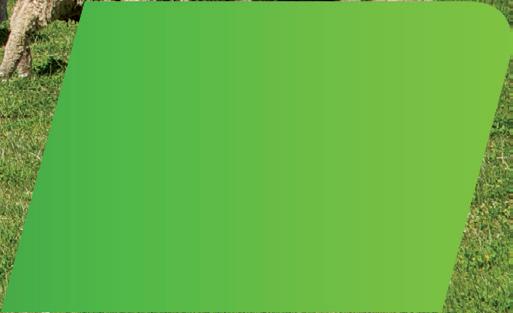


systems and communities, the added complexity requires more debate in our communities – a willingness to connect the dots,” Chairman of Snowy River Interstate Landcare Committee, Robert Belcher says. “Only when we connect the dots, do we have sufficient information to get a genuine solution for nature and human endeavours.
“There is one constant that farming systems and communities rely upon and
tory has shown that stable and free civilisations only exist when Common Law Property Rights are honoured, and the law of equity allows people to work together on environmental issues. Coercion is not a lasting tactic.”
Mr Belcher indicated that Snowy River Interstate Landcare Committee was established many years ago to enable landholders to work together and to share unconstrained ideas on
tal needs of small country towns who are systematically abused and discarded by centralised decisions. Staying true to our origins of local engagement, not top-down agendas, is our commitment to farming communities,” he said.
“The Landcare movement has become very diverse and has been hijacked by activists in many other organisations. We realise there are some challenging years ahead, and we are keen to engage local communities in projects
Complexities of farm decision-making made simple
By NATHAN THOMPSON
RURAL Financial Counselling Service (RFCS) NSW Interim CEO, Anita Kemp, said in a highly complex business such as farming, it can be di cult to stay on top of your game in terms of making productive and profitable decisions.
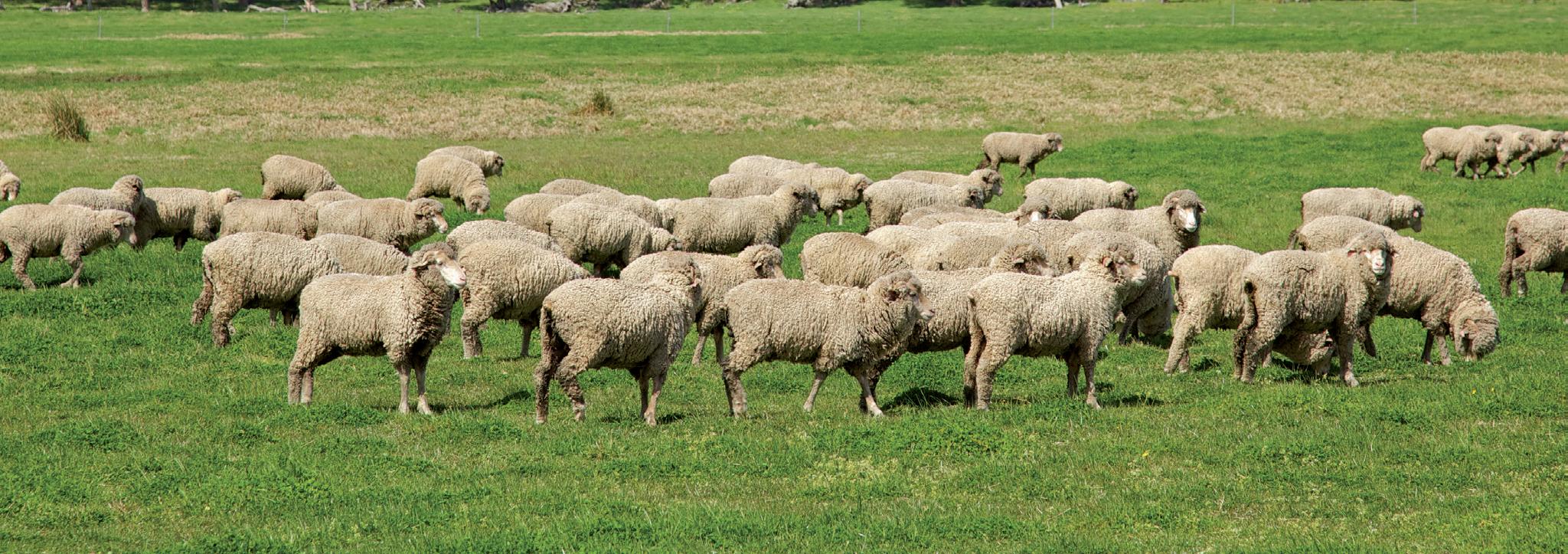

The business of farming is a constant process of making decisions and the way we tend to make decisions is, in part, determined by our personality.
Choosing a path that provides acceptable reward for acceptable e ort at an acceptable amount of risk is at the core of decision-making and sound farm management.
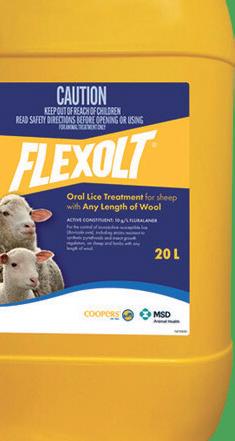

“Each individual farmer has to de ne what acceptable means to them. People make decisions based on their values, goals, biases, and personalities, so what is acceptable to one farming business, in terms of risks and rewards, may not be acceptable to the next,” Mrs Kemp said.
“There are many ways people tackle decision-making but generally it comes down to three approaches (or a combination of these
things). The head, the logical approach to decision-making, the heart, the emotional aspect of decision-making, and the gut, your intuition shaped by knowledge and prior experience.”
Mrs Kemp said generally when facing complex decisions, we tend to move out
of the ‘head’ and rely increasingly on the ‘heart’ and ‘gut’ to arrive at an answer. However, this is really the time when a logical, analytical decision-making process is of greatest bene t.
“It is important to be prepared and give yourself time to adequately evaluate
the decision you’re facing. Have a purpose statement and clearly de ned business goals and weigh every decision against these. It’s easy to get bogged down in everyday problems and forget the bigger picture, so a purpose statement can be a reminder of where you’re
going,” she said.
Rural Financial Counselling Service NSW o ers a free and con dential service specialising in agricultural and rural small businessnancial management. RFCS is a not-for-pro t organisation with a goal to strengthen communities by helping

rural and regional businesses be prepared, responsive and sustainable.
To nd out how the RFCS NSW team can help you talk through goal setting and purpose statements, and improve your decision-making, call 1800 319 458 to make an appointment.
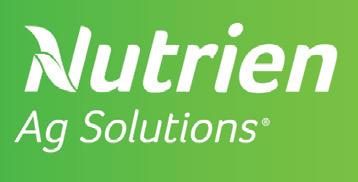
Wednesday September 13, 2023 Snowy Monaro Farmer - Page 6
The First Ever Oral Lice Treatment For Sheep Has Arrived. NUTRIEN AG SOLUTIONS COOMA NutrienAgSolutions com au Tony Clarke - Merchandise - 0408 114 812
Rosskin Angus tops at $17,000
ROSSKIN Angus held their annual on-property sale at Boundary Creek, Jimenbuen on Monday September 4.

Adam Walters welcomed everyone to the sale saying this is their 40th year breeding bulls and the family are proud of the genetics.
Thirty bulls were on offer this year of which 20 sold under the hammer for an average of $8,800.
Rosskin Moe T02 was the highest priced bull selling for $17,000 a son of Chiltern Park Moe M6, 17 month old that weighed 688kg. He sold to Kelvin, Wendy, and
Jamie Ingram from Bonang Victoria. Kelvin Ingram said there was plenty of competition for the Rosskin Moe T02. “Healthy competition drove the price up a bit but as far as why we wanted him, he’s our kind of bull, great charts, and good feet.”
Volume buyer at this year’s sale was LH & JL Reed from Delegate who bought three bulls for an average of $10,667 and is a repeat buyer. Other repeat buyers included IG, BJ & J Wallace who purchased a son of Beast Mode for $13,000 and DL & JM Ingram a son of Justice for $12,000.
Ewe nutrition is key to lamb survival
By AUSFARM NUTRITION
THIS time last year, saw the beginning of one of the best spring seasons on record, with above average rainfall recorded across the Snowy Monaro region.
While accompanied by increased worm pressures and hoof issues, early spring rainfall last year provided large amounts of quality feed that boosted spring lambing activities.
However, with tighter seasonal conditions since March this year, and recent forecasts suggesting little chance of a spring break, feed is looking to be a concern for producers during the lambing period.
Although there are many variables that may lead to mortality in pregnant ewes and newborn lambs, birth weight is the largest determinant of lamb survival, and is strongly linked to maternal nutrition.
This view is supported by AusFarm Nutrition Products’ Chief Nutritionist, Dr Paul Meggison, who has been working with producers to improve lamb survival over the past 45 years.
“If we look a er the ewes, the results will be seen in lamb survival,” Dr Meggison said.
“In order to do this, you should aim for ewes to maintain a stable body condition score of 3 to 3.5 throughout pregnancy.”
However, in many cases this may be easier said than done.
Ewe nutritional requirements increase from day 90 of pregnancy until lambing, around two months later. Interestingly, a condition score change a er day 90 can alter the lamb birth weight by 0.5kg. So it’s important for the ewe to have a rising plane of nutrition to match increasing requirements.
“Essentially, the best feed should be reserved for the lambing paddocks when they need it the most,” he said.
NUTRITION ESSENTIAL: Although there are many variables that may lead to mortality in pregnant ewes and newborn lambs, birth weight is the largest determinant of lamb survival, and is strongly linked to maternal nutrition.
tant, because as the foetus and placenta grow, they take up a large amount of room in the abdomen of the ewe. This can squash the rumen and signi cantly reduce the ewe’s appetite.
Furthermore, e ective pre-lambing worm management can have a huge impact on lamb survival. Worm burdens can signi cantly increase the nutritional requirements of the ewe, making it more di cult to maintain a stable condition score, regardless of feed quality.
Ewes have a compromised immune system during pregnancy, so mild worm infections can become a much larger problem in a short period of time.
Commonly overlooked by producers, is the value of supplementing ewes with an e ective lambing supplement that provides essential minerals, vitamins and trace elements.
According to Dr Meggison, macro minerals like calcium,
lamb massively outstrips sup ply from feed alone,” he said.
“Extreme de ciencies can lead to hypocalcaemia, however, well before they hit critical levels, mineral deciencies reduce the e ciency of essential bodily functions, leading to low immunity, poor production and stress.”
“Stressed ewes with poor mineral reserves and low immunity are more likely to lose lambs due to mismothering, starvation, dystocia and stillbirth”, he said.

Minerals can also assist with feed conversion eciency and energy metabolism helping to avoid pregnancy toxaemia. Similarly, trace elements and vitamins are essential for immune function when ewes and lambs are at their most vulnerable.
ment during lambing can make this happen.
Dr Meggison said not all supplements are equal, and not all supplements generate the same results. The value of an e ective lambing supplement is huge, with a recent study showing returns of almost four to one.
A recent independent trial highlighted the signicant value in supplementing pregnant ewes with a complete lambing supplement like StockMins-EweLamLac.
“For 1,000 ewes supplemented the di erence in revenue can be upwards of $16,000,” he said.
Independent Trial: StockMins-EweLamLac HE lambing supplement vs Causmag®, lime and salt
(197 single bearing ewes) over a 98-day period from four weeks pre-lambing until four weeks post-lambing.
The trial group o ered StockMins-EweLamLac HE performed signi cantly better than Causmag, lime and salt, including:
• 3.3 percent more lambs weaned
• An average of 6.1kg heavier lambs at weaning An average of 4.8kg
heavier ewes at weaning
What does this mean to your bottom line?
For 1,000 single bearing ewes over a 98-day supplementary period (four weeks pre-lambing, six weeks lambing period and four weeks post-lambing), a sheep breeding operation can realise a $16,569
net income di erence by Mins-EweLamLac HE over
StockMins-EweLamLac is a weatherproof, granular, signed to supply pregnant and recently lambed ewes with balanced levels of essential minerals, vitamins and trace elements to assist in correcting de ciencies and boosting reserves during times of high demand.
StockMins-Hoof n Horn is a high speci cation weatherproof, granular supplement designed to be fed to assist in controlling lameness, strengthening hooves and boosting ewe immunity during times of high production stress such as lambing.
Contact AusFarm Nutrition Products on 0412 048 055 or visit www.ausfarmnutrition.com for more information on how StockMins-EweLamLac and StockMins-Hoof n Horn can help boost your lambing results this season.
Snowy Monaro Farmer - Page 7 Wednesday September 13, 2023
percentage
Supplements for Lambing Success

Maximise Lambing Performance this Season

StockMins-EweLamLac is a weatherproof granular loose lick supplement designed to support ewes under pre and post-partum stress. It focuses on increasing dietary levels of magnesium, calcium and phosphorous to satisfy the demands of a growing foetus.
Greater performing ewes
Higher weaning weights
maximise your weaning percentage this season lambing supplement to get the most out of your ewes.
and trace element significantly elevated during pregnancy to early post-lambing). These for ewes carrying
StockMins-EweLamLac also boosts feed conversion efficiency and immune function, ultimately supporting ewes and lambs when they are most vulnerable to disease.
StockMins-Hoof n Horn
during this period demands to sustain a foetus and support milk
StockMins-EweLamLac is a weatherproof granular loose lick supplement designed to support ewes under pre and post-partum stress. It focuses on increasing dietary levels of magnesium, calcium and phosphorous to satisfy the demands of a growing foetus
StockMins-EweLamLac also boosts feed conversion efficiency and immune function, ultimately supporting ewes and lambs when they are most vulnerable to disease.

StockMins-Hoof n Horn is a high specification weatherproof granular loose lick supplement designed to be fed to ewes, prior to and during the lambing period, to fortify hooves and chitinous tissue.
of your ewes this lambing season call the team at South East Rural 3511.

The combined power of three active ingredients targeted at hoof growth and repair & integrity, supported by essential minerals, trace elements and elevated levels of vitamin E make StockMins-Hoof n Horn an ideal supplement for highly productive ewes this season.
For more information on how to maximise your lambing performance this season call the team at South East Rural Supplies (02) 6452 3511
Wednesday September 13, 2023 Snowy Monaro Farmer - Page 8
Improve hoof growth and structure Fight infection and boost immunity Improve ewe performance Weatherproof and easy to use AusFarm Nutrition Products
ausfarmnutrition.com
Boost lamb growth & development Increase weaning percentage Improve ewe health & performance Weatherproof, safe & easy to use
StockMins-EweLamLac
ausfarmnutrition.com
-EweLamLac Supplement
























 By SAM TONKS
By SAM TONKS




























